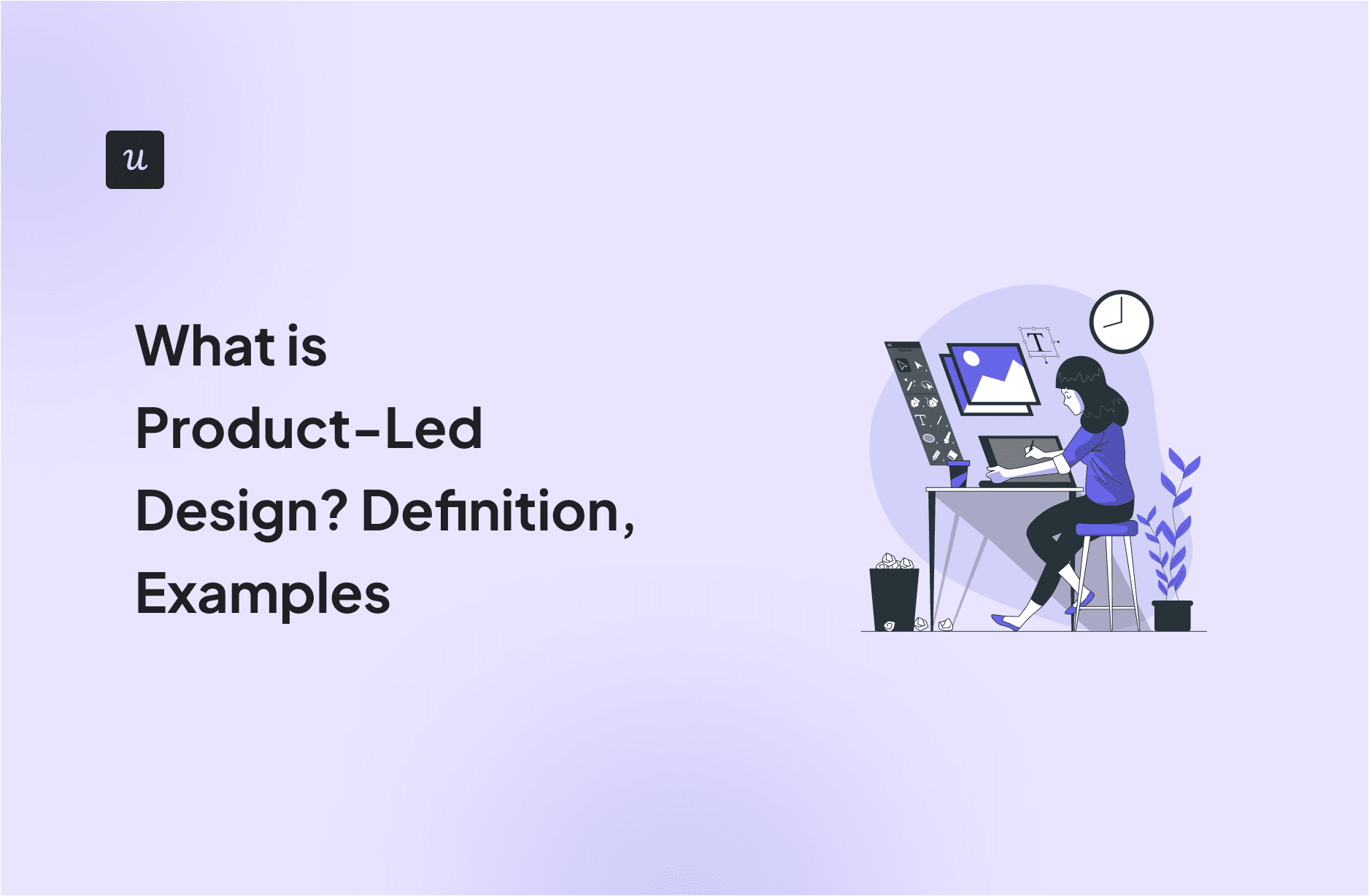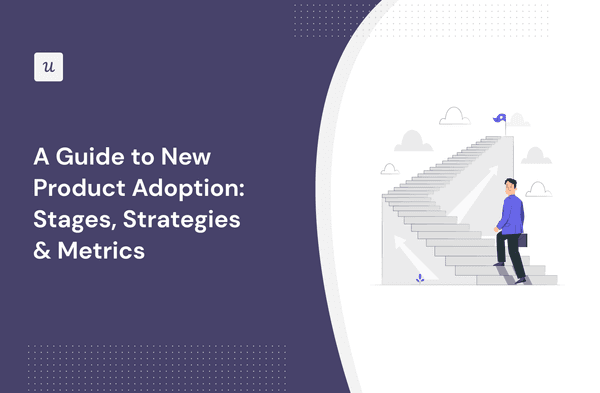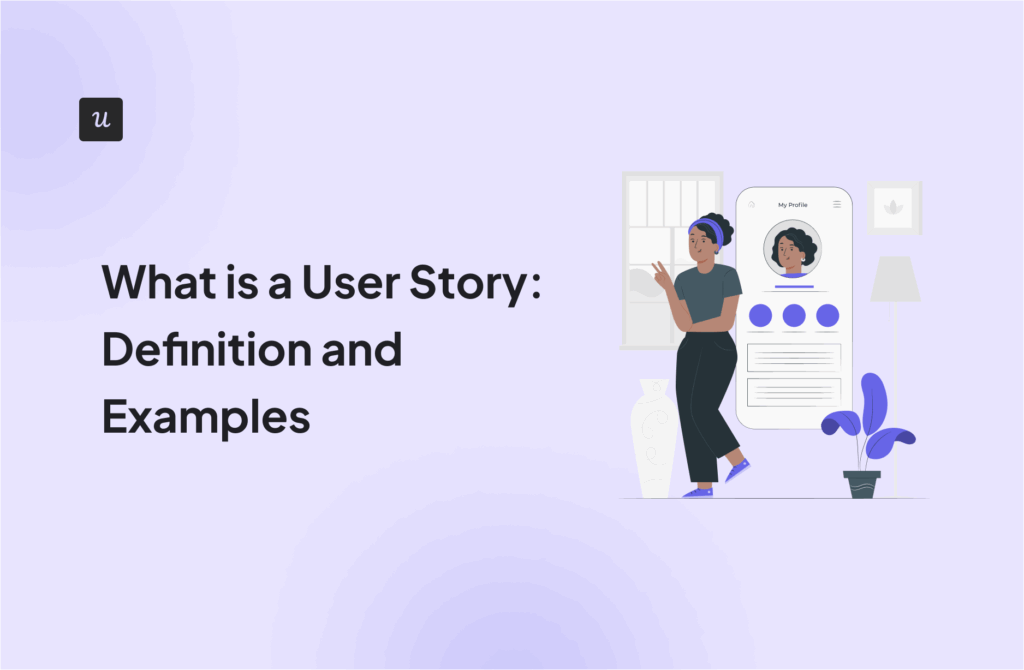
At its very core, product-led design is all about creating a seamless customer experience that enables users to unlock value with your product quickly. The idea is that once users truly see your product’s benefits, they naturally want to upgrade to the paid plan.
What’s in it for you? Simple: Increased customer lifetime value and sustainable revenue growth!
Easier said than done, though. Several elements go into successfully executing a product-led growth strategy.
Let’s dive in to learn what they are and how you can implement them into your product for greater customer success and acquisition!
Try Userpilot Now
See Why 1,000+ Teams Choose Userpilot

TL;DR
- A product-led strategy focuses on making your product, its value proposition, and user experience the primary drivers of customer acquisition, engagement, and retention.
- Product-led design (PLD) is a business strategy for creating a user-centric product that drives customer success and acquisition through intuitive and valuable features.
- Product-led companies emphasize the product’s value as the main driver of growth. In contrast, traditional sales-led businesses rely more heavily on aggressive product marketing and inorganic growth efforts.
- Benefits of product-led growth design include greater customer experience and retention by better aligning with user needs. This leads to faster market launches and higher adoption rates as well.
- The five crucial steps to implementing product-led design include:
- Conduct user research to inform product design
- Align design with product strategy and roadmap
- Prioritize ease of use and accessibility in your design
- Develop, test, and refine your design iteratively
- Regularly track metrics to measure performance
- Key PLD elements proven to drive product-led growth include:
- An intuitive user interface
- Free trials and freemium models
- Free trials or freemium modelsIn-product guidance and education
- Continuous improvement based on user feedback
- Product-led businesses looking to adopt PLD can draw inspiration from Slack’s user-friendly design, Atlassian’s freemium models, Zoom’s tiered pricing, and Salesforce’s modular ecosystem.
- Ready to perfect your product-led growth strategy? Schedule a Userpilot demo and see how you can get started.
What is product-led?
Product-led growth strategy is the process of creating a product that delivers immense value and an exceptional user experience. By doing so, the product itself successfully drives customer acquisition and generates loyalty from new and existing customers alike.
The goal behind a product-led strategy is to provide users with such a top-tier product that they stick to it, always coming back for more. In other words, the product promotes organic growth and reduces dependency on traditional marketing and sales efforts to get more paying customers.
The product-led growth model starkly contrasts with commonly used sales-led strategies in many other ways, too.
For instance, traditional methods only care about moving buyers through the sales cycle, with little regard for their user experience. However, product-led companies focus on their product experience and value proposition to boost customer retention and acquisition.
What is product-led design?
Product-led design (PLD) is a strategic approach where the design of your product is centered around user needs and experiences. The aim is to reduce time to value so users unlock your product’s benefits sooner rather than later. This, in turn, helps retain customers and increase user engagement and growth.
Core principles of product-led design include:
- User-Centric Design: Prioritizes understanding and addressing user needs and pain points.
- Simplicity and Intuition: Emphasizes an intuitive product design to enhance user satisfaction.
- Value-Driven Features: Focuses on delivering features that provide clear, actionable solutions to users.
In short, this product-led growth approach ensures that every design decision adds value and ease of use for customers.
How PLD differs from traditional design-led approaches
We’ve briefly touched upon how product-led growth companies differ from more traditional ones.
Next, let’s look at some more differences and discuss them in detail.
- Focus on the Product: PLD centers on the product’s functionality and overall experience, aiming to solve specific user problems. In contrast, traditional approaches prioritize design aesthetics over usability and experience.
- User Feedback: In product-led growth, feedback is continuously gathered and used to base design iterations on. Traditional approaches only incorporate feedback at specific stages, with the design process being less reliant on user insights.
- Metrics-Driven: Product-led growth uses performance metrics, like user engagement and conversion rates, to measure success and guide design changes. Traditional approaches evaluate success based on adherence to design principles, with less emphasis on metrics.
- Collaboration: PLD involves close collaboration between product managers, designers, marketers, and engineers, aligning design with product goals and technical feasibility. Traditional design sees designers working independently before handing off to other departments.
Benefits of product-led design
Benefits of product-led design include:
- Improved Customer Experience: Tailors the product to user needs, leading to a more intuitive and enjoyable experience that addresses real user problems.
- Increased Customer Satisfaction: When a product is designed with users in mind, it results in more engaging experiences, leading to higher satisfaction and increased usage.
- Faster Time-to-Market: An iterative design process allows for quicker adjustments and responsiveness to changing trends. Therefore, it helps speed up the launch process.
- Higher Customer Retention: Continuous improvements keep customers engaged and loyal to the product. Especially when those improvements are based on their feedback.
- Greater Product Adoption: Since the design aligns closely with user needs, it boosts your product’s appeal and usage rates.
Key components of product-led design
There are certain steps you must go through to create a design optimized for product-led growth.
These steps cover a wide array of tasks, from conducting thorough user research to continuously monitoring and iterating.
User research and insights
User research is the foundation of all product-led growth. Understanding your users’ needs, behaviors, and pain points ensures you design a product that genuinely solves their problems.
If you’re new to user research, start by conducting surveys, interviews, focus groups, and usability tests.
All these methods help gather actionable insights to further inform your design decisions. For instance, through user research, you can better identify user motivations and preferences. Using this information, you can create a customer-centric product that truly resonates with your target audience.
Product strategy and roadmap
It is essential to pay special attention to this step because your roadmap serves as the document that aligns your design efforts with broader business objectives. To begin, set a product vision, identify the core value propositions, and map out a strategic path to achieve them.
While mapping the path, also include design efforts in there, and tie them with product performance KPIs as well. This way, the design initiatives become an integral part of the product strategy.
Design for usability and accessibility
You must ensure that your product is easy to use and inclusive for all users, regardless of their abilities. To accomplish such inclusivity, product-led companies focus on both usability and accessibility.
Usability involves simple navigation and interface, and user-friendly content that guides users through your product seamlessly. On the other hand, accessibility ensures that your product is usable by people with disabilities, including those with visual, auditory, motor, or cognitive impairments.
Incorporating UX accessibility best practices expands your product’s reach, ultimately driving customer acquisition while demonstrating a commitment to inclusivity. Examples of product accessibility include adding alternative text for images and using accessible color contrasts.
Iterative development and testing
Next, you must adopt an approach of iterative development and testing to enable continuous improvement of your design. This involves developing your design in small, manageable increments. Then, each increment is tested and validated with real users before moving on to the next iteration.
Another key element of this step is regularly collecting user feedback to identify issues and uncover new opportunities. This way, you can make data-driven adjustments throughout the development cycle.
Such an iterative process helps minimize risks and keeps your design agile and responsive to changing user needs.
Product analytics and measurement
Lastly, product analytics and measurement are the cornerstone of data-driven decision-making in product-led growth design.
By tracking key metrics and analyzing user behavior, you can assess the effectiveness of your design and make informed decisions for future improvements. Regularly monitoring these data points also helps uncover friction areas that require further work.
This ongoing analysis is essential for optimizing your product experience and sustaining product-led growth.
Key PLD elements to implement in your product
For the greatest impact, there are certain elements that all product-led companies should include in their designs. These elements are proven to boost user engagement and satisfaction, thereby actively contributing to product-led growth. Let’s see what they are!
Intuitive user interface
An intuitive user interface enhances product-led growth by ensuring that users can easily understand and engage with your product. Such a UI minimizes the user’s learning curve, enabling them to quickly grasp how to use your product. All this ultimately leads to greater satisfaction and increased adoption.
For this reason, every product-led company prioritizes ease of use when it comes to design, ensuring a smooth user journey. Some ways to create such a design include:
- Using clear and consistent labels and icons across pages.
- Minimal use of unnecessary elements and complex paths.
- Maintaining uniform design patterns and behavior throughout.
- Responsive design that works on different devices and screen sizes.
Canva is a good example, displaying content in a user-friendly manner with simple navigation.

Free trials and freemium models
These strategies let users experience and discover your product’s value firsthand. Once users are impressed by your product during the free trial, they are more motivated to upgrade to the paid version.
For this reason, this limited exposure strategy often leads to higher adoption rates and customer retention. Several businesses use this product-led growth strategy to their advantage, with Grammarly being a notable example.

In-product education and onboarding
Guiding users reduce their time to value, helping them find the benefit of your product sooner rather than later. This is why in-app guidance and education are crucial for increased engagement.
You can introduce such guidance by using tooltips and in-app messages to offer timely, contextual help. Next, try using modals to highlight key features and interactive walkthroughs to provide a hands-on experience.
Lastly, onboarding checklists are another good example, useful for getting customers set up quickly instead of just leaving them on their own.

Design based on customer feedback
A common theme among all product-led growth companies is their focus on continuously improving their product based on customer feedback.
This is a vital PLD element as it ensures that your product evolves to meet changing user wants and needs, therefore enhancing satisfaction and success. You can start collecting feedback with usage analytics, like usability tests, and email or in-app surveys like the NPS survey Groove uses below.

Examples of product-led design
Examples of PLD are easy to come across at product-led growth companies that create intuitive, customer-focused tools.
Some examples worth mentioning include Slack’s seamless interface and Atlassian’s freemium models. Let’s dig deeper into these design choices to see how they can help drive success!
Slack
Slack’s success highlights that a simple, intuitive interface can be highly effective as long as it delivers real value. For this reason, the real-time messaging app has become a workplace staple, facilitating smooth customer communication.
However, it isn’t just the user-friendly design that has led Slack to success. It also offers extensive integration options and a robust app marketplace. These functionalities enhance Slack’s utility across a wider audience, leading to increased adoption.
To achieve similar results, take a page out of Slack’s book and design products with simple interfaces coupled with excellent value-adding features.

Atlassian
Jira and Trello have become indispensable tools for project management due to their straightforward design and powerful task-analysis features. However, what really helped put both these tools on the map was their freemium models.
Providing freemium or free trials allows users to access basic functionalities, just enough to realize the product’s immense value. They help lower entry barriers and provide a clear path for enhanced capabilities, crucial for successful product-led growth.
Both tools also introduced gradual feature unlocks, effective for encouraging upgrades. This makes it easy for teams to scale their use of these tools, driving widespread engagement and acquisition.

Zoom
Zoom smartly capitalized on the remote work trend with its user-friendly platform. Apart from the timing, Zoom also got the pricing tiers right. It offered a free tier model, providing essential features at no cost, with limitations that encouraged users to upgrade for increased capabilities.
This is a common design approach that works great in driving product-led growth. The paid tiers provide easy avenues for converting users into paying customers who seek advanced functionalities as their needs grow.

Salesforce
Salesforce’s ecosystem of cloud-based applications excels in catering to diverse business needs through its product-led design. By offering a robust suite of integrated tools and customizable solutions, Salesforce supports various functions from sales to customer service.
Its modular approach enables businesses to start with core features and expand by adding specialized apps as needs evolve.
This flexibility, combined with seamless integration and an easy-to-understand interface, helps companies tailor the platform to their specific requirements. Due to this design choice, Salesforce ensures sustained engagement and growth.

Conclusion
As part of the product-led growth model, product-led design is all about the user. So whatever you do, from developing new features to changing the design, ensure you always keep the user front and center.
To kick off your product-led design strategy, introduce intuitive interfaces, free trials, and in-product guidance.
Next, perfect your strategy by conducting user research, aligning the design with your strategy, ensuring usability, and regularly iterating based on feedback. With these steps in mind, you’ll enhance the user experience and achieve higher retention rates in no time!
Want to get started with product-led design? Get a Userpilot Demo and see how you can boost your customer acquisition.







